Our acquaintance with Sicily began in the city of Catania. We decided to leave our rental car on one of the side streets and walk through the city. Leaving the car felt a little scary — everything around seemed hostile.
This first impression of Catania, and Sicily in general, will pass quickly. But at that moment, we looked around cautiously, and it wasn’t about the mafia at all: rundown buildings showing traces of former grandeur, overflowing trash bins, a cultural layer on the sidewalks in the form of papers, flyers, and, pardon, dog droppings, graffiti, people with strange appearances… This is what stands out immediately, especially if you find yourself in some of Sicily’s backstreets. It exists, that’s a fact. But, how to explain it…
Despite all this external unattractiveness, which, by the way, is not everywhere, Sicily quickly charms you. And it’s not that you stop noticing the trash and poverty; you just start perceiving it all differently. Like a local feature, a unique flavor. It’s easy to get absorbed by the medieval atmosphere here. And these streets don’t get old, they don’t bore you… because they are diverse. And they are alive. It’s the fullness of life, simple and real, that is most captivating about Sicily! I had a similar feeling later when I visited Naples.
We didn’t visit all the iconic places in Sicily, but we did travel a bit. I hope my little guide will help you navigate and decide on a route. My main advice: if you’re not planning a beach holiday, visit Sicily in the off-season. We went in mid-December, and it’s the perfect time to explore this amazing island.
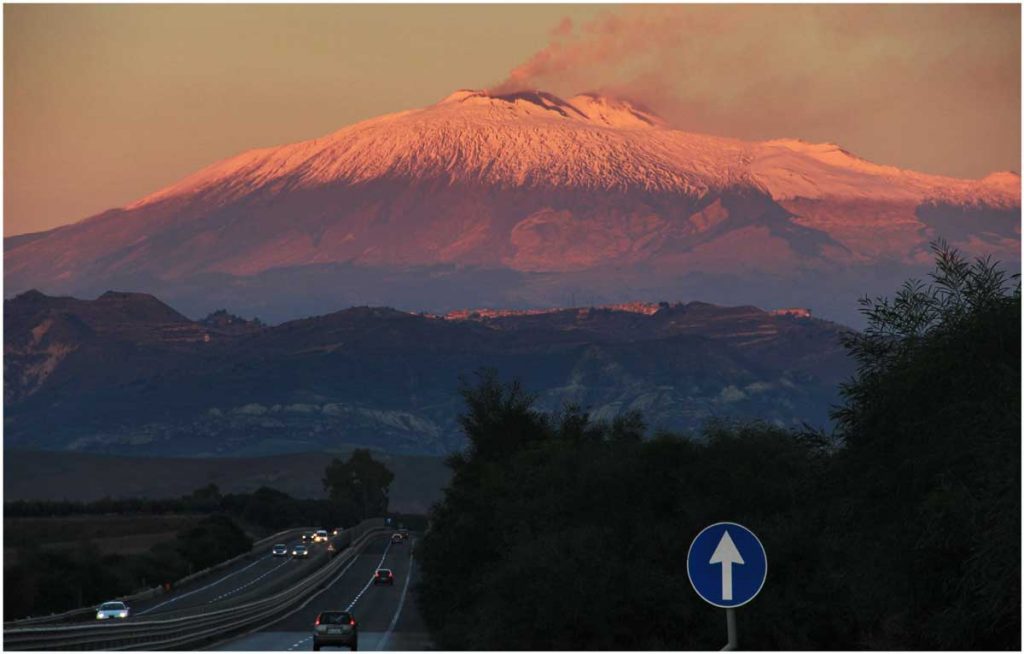
Etna is not just an active volcano but the highest active volcano in Europe. Its height is 3,329 meters above sea level. According to various sources, Etna has between 200 and 400 side volcanic craters. On average, every three months, lava erupts from one or another of these craters. Etna is magnificent! The craters are constantly “smoking,” and white smoke columns hang over the summit permanently. We were in Sicily in December, so we didn’t climb to the top. But the opportunity is definitely there if you want to.
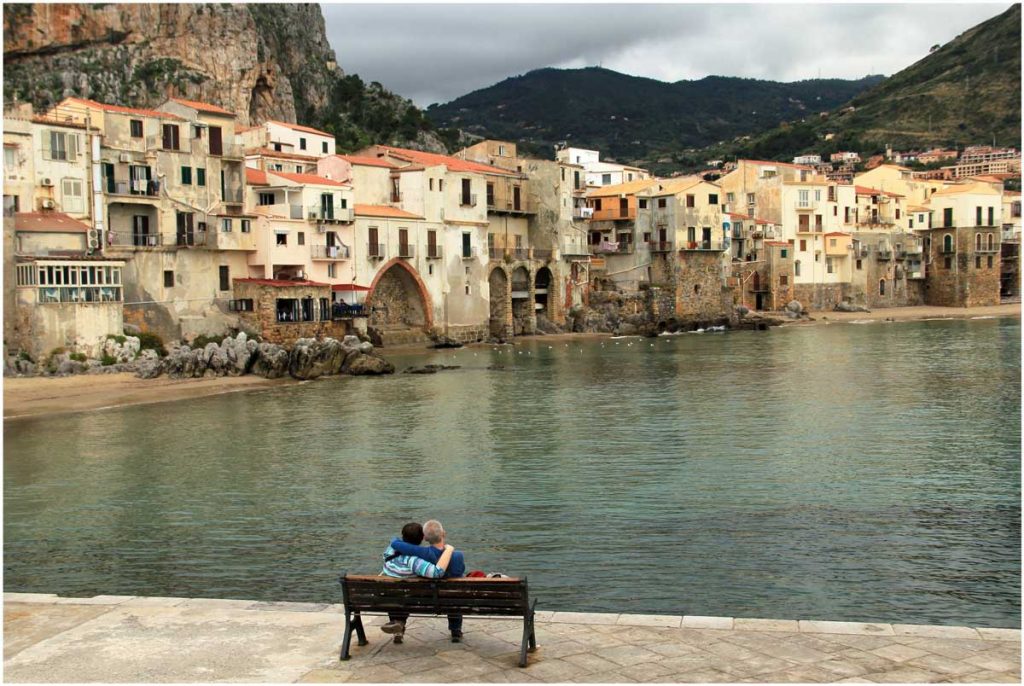
Sicilian Cefalù is part of the association of “The Most Beautiful Small Towns in Italy.” Thanks to its rich history and the medieval structures preserved in the heart of the town, Cefalù radiates an incredible aura! It’s one of the most stunning places in Sicily, etched in memory with vivid imagery, and recalling it makes my heart ache with sweet nostalgia. Strolling along the sea, enjoying the almost complete solitude, the sound of the waves, the cries of seagulls, and the amazing seaside houses… I don’t know what it’s like here in summer, but in December, Cefalù is perfect!
And of course, Cefalù is renowned for its Cathedral of the Transfiguration (a UNESCO heritage site) and its magnificent mosaics.
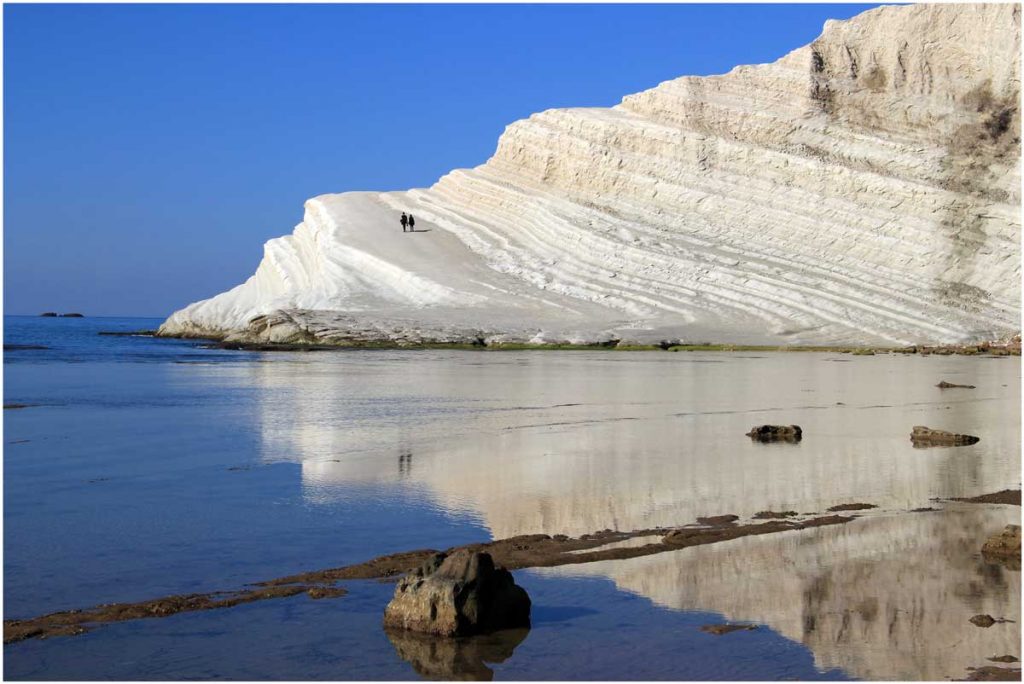
The Turkish Steps (Scala dei Turchi) is an unusual rock formation by the sea. It’s made of sedimentary marl, which gives it a dazzling white color. In bright sunlight, it’s almost as difficult to look at as snow in the mountains. It’s called “steps” due to its stepped surface, polished by wind and water over centuries.
The sea, beach, and surrounding rocks here are incredibly photogenic! The stunning white rock against the blue sea and sky is a mesmerizing sight. It’s hard to take your eyes off it.
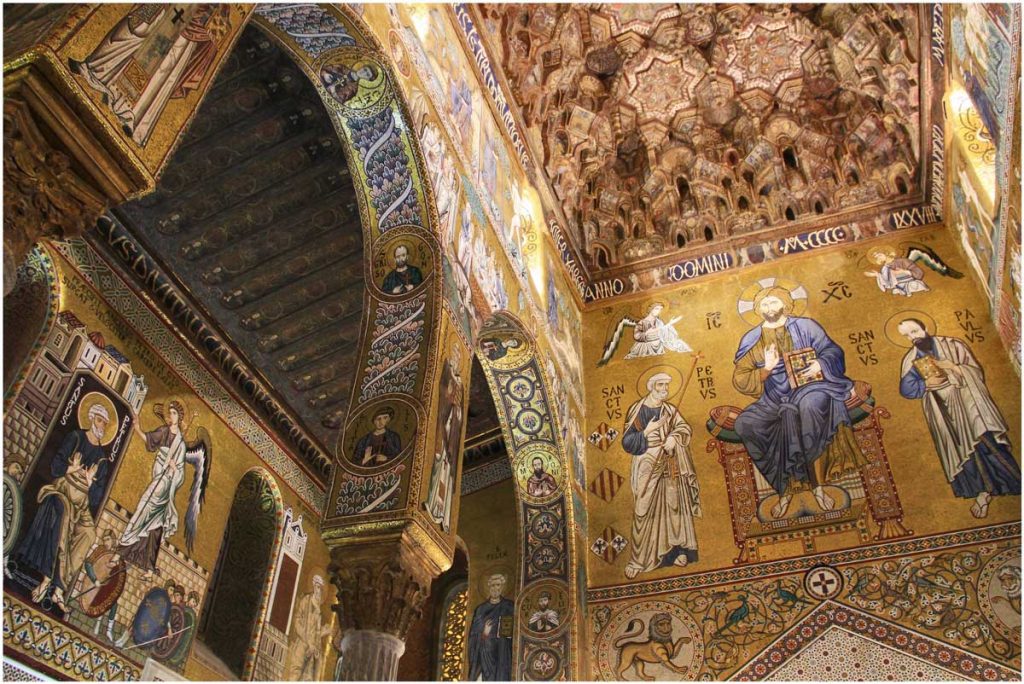
Modern Palermo is the largest port and the fifth-largest city in Italy by population, following Rome, Milan, Naples, and Turin. It’s noisy, chaotic, but incredibly atmospheric.
Palermo was founded by the Phoenicians in 734 BC. They built a port here and became heavily involved in trade and politics, thanks to the city’s ideal location. But like other Sicilian cities, Palermo has seen its share of various rulers. After the Phoenicians, the Romans arrived. Under them, Palermo became not only a port but also the granary of Ancient Rome. The Byzantines replaced the Romans, and in the 9th century, the Saracens conquered the city, making it the capital of Sicily and the island’s most important trading center. This was a period of great prosperity for Palermo. It was during the Arab rule that Palermo acquired the distinctive look that remains today. Just a short walk around the city is enough to see: there’s very little that feels European here. It feels as though you’re somewhere in Asia.
Then came the Norman era, with rulers who were exceptionally talented and versatile. They allowed their new subjects to retain their unique culture. Even Norman architecture shows great flexibility, blending Norman, Byzantine, Arab, and Roman elements. A perfect example of this is the Cathedral, where styles and eras truly merged into one!
But the most famous building in Palermo is the Norman Palace with the Palatine Chapel. When I stepped inside, an involuntary sound escaped my chest—whether a sigh or a quiet “ah.” It’s impossible to describe this beauty in words. The entire ceiling, columns, and arches are covered in mostly golden mosaics. This fills the whole chapel with a warm, soft light. And it feels like you stop breathing because of its beauty.
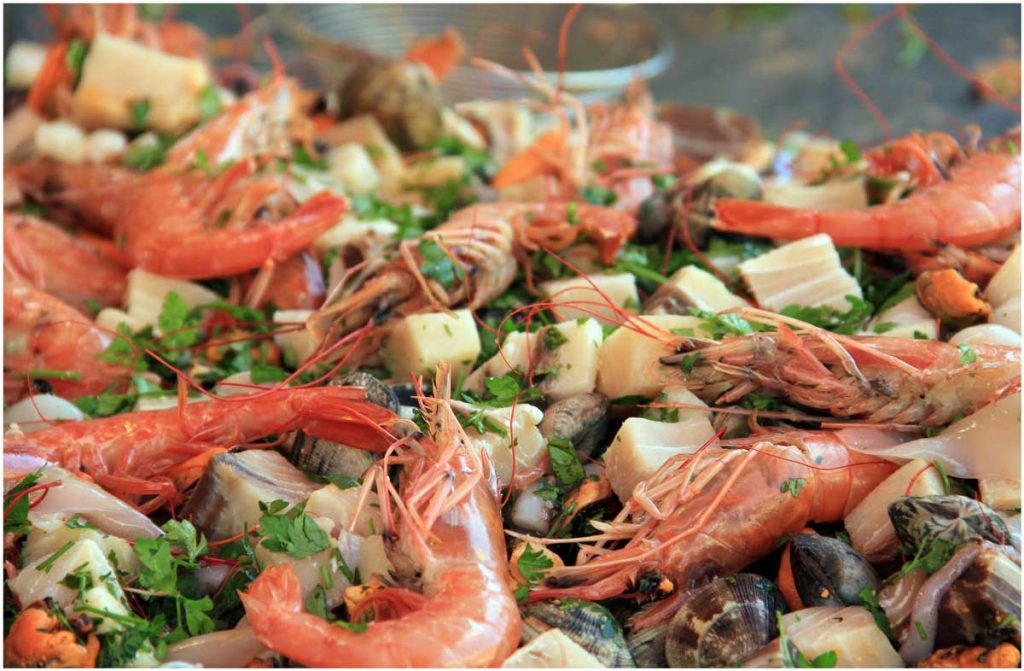
Sicilian markets are something unimaginable! You walk between the stalls, and you’re in awe of the explosion of colors… The noise of voices, the smell of spices and fish, the bright tones of vegetables and fruits mix together, stimulating almost all your senses at once. And if you touch the cool scales of the fish lying on the counter, then your sense of touch is also engaged. That’s how you wander around: listening, smelling, seeing, and touching.
Seafood cocktail is absolutely divine! It looks like this: pieces of the freshest octopus, squid, and mussels are mixed with parsley and drizzled with olive oil. All of it is placed in a paper wrap, and they give you a lemon on the side. You drizzle the seafood with lemon juice and… mmm… And if you pair it with some white wine…
The largest fish markets we saw were in Catania and Palermo.
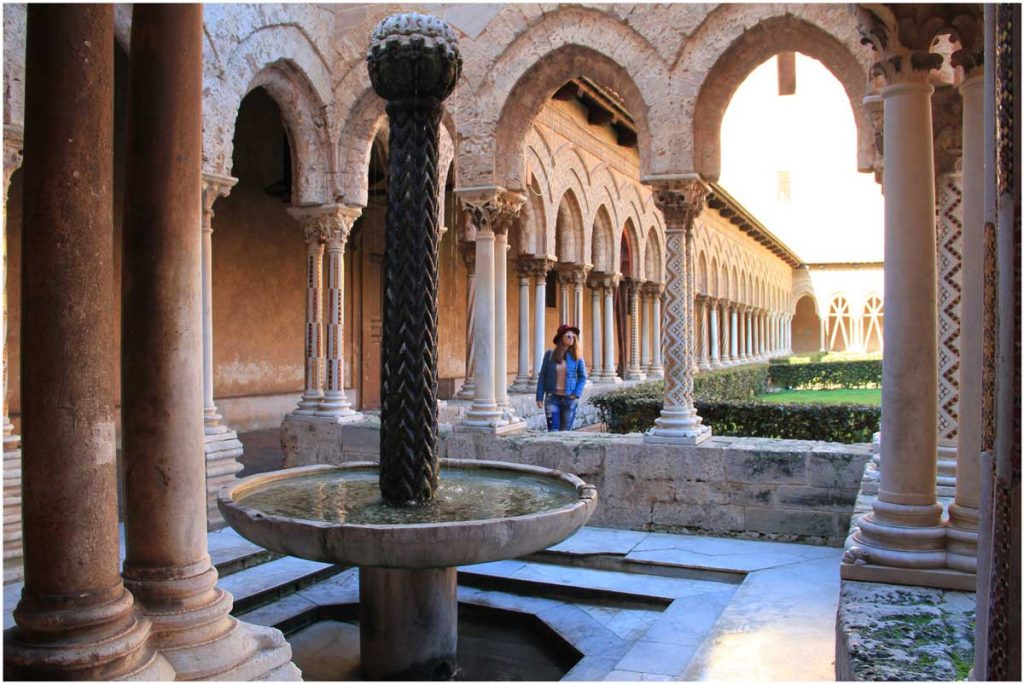
Monreale, located not far from Palermo (essentially, Monreale is a southern suburb of Palermo situated in the highlands), is famous for its cathedral (UNESCO) with stunning mosaics and a Benedictine monastery. The monastery’s cloister simply took our breath away. The main “highlight” of the cloister is the Arabic-style columns, and there are no two alike! 104 arches and 104 pairs of columns! And not only are the columns different, but the capitals — the parts that crown the columns — are also unique. In the bright sunlight, all this beauty sparkles and shines, creating a stunning spectacle… The columns are made of lava stone and other precious materials, adorned with carvings, mosaics, and marble inlays. You could examine them endlessly…
But besides this, don’t miss the eastern viewpoint with its picturesque view of Palermo. The place is very romantic: mountains, the sea, and rooftops upon rooftops.
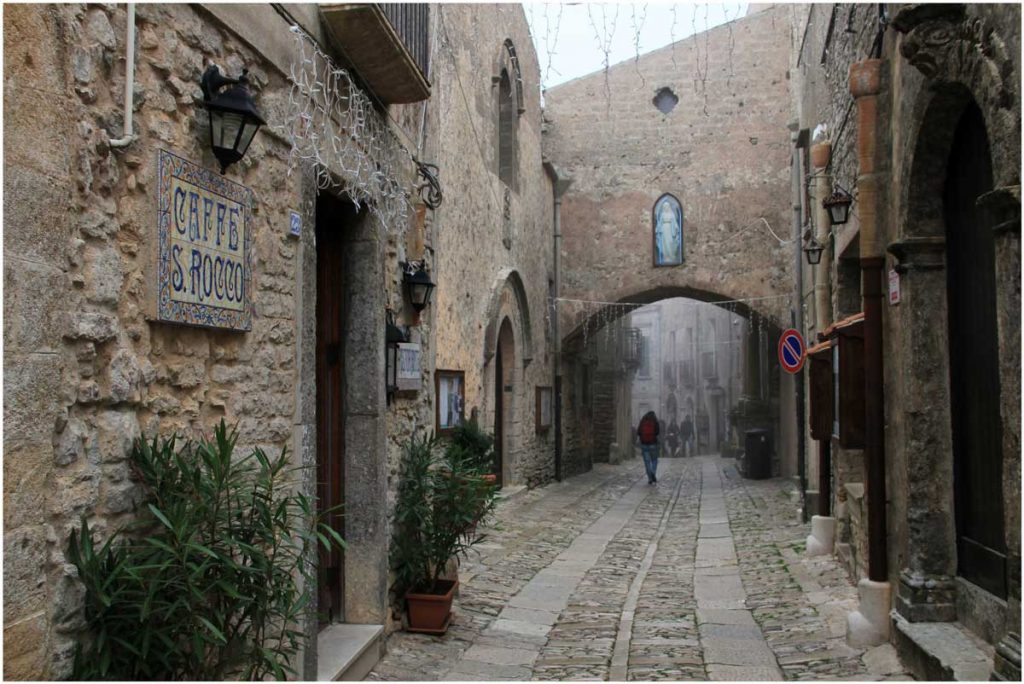
The town of Erice is one of the most charming corners of Sicily. When we climbed up there, the town was engulfed in a dense fog. Fog is common here, which is why Erice has earned the epithets “the foggy city” and “the city in the clouds.” It was an incredible feeling! The fog, stone walls, stone roads, narrow streets, silence, and the echoing sound of footsteps created an amazing atmosphere. It felt as though you had somehow been transported hundreds of years into the past or into another dimension. The sense of reality completely vanished! We’ve been to many places. We’ve seen many things. But we’ve never felt anything quite like this! It seems that in Erice, there really is a portal to the past.
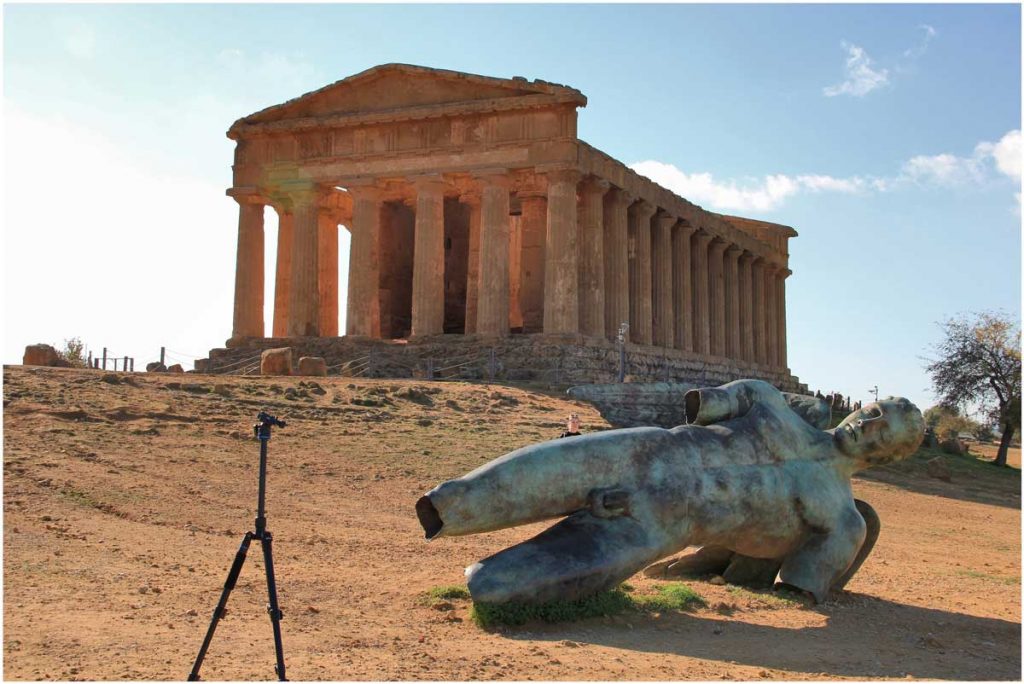
Where can you see the ruins of ancient Greek temples? “Of course, in Greece,” you might say. But it turns out, they’re not only in Greece, but also in… Sicily! Near the Sicilian city of Agrigento, there is an entire Valley of the Temples. The city was founded by Greeks from the island of Rhodes in 581 BC. Akragas (as the Greeks called the city) became one of the significant and prosperous cities of the ancient world. It was during this time that the Valley of the Temples was built, and the city came to be known as “the most beautiful city of mortals.”
Today, the Valley of the Temples is a large archaeological park with the remains of Greek temples, which are considered the finest examples of the Doric style outside Greece and are protected by UNESCO.
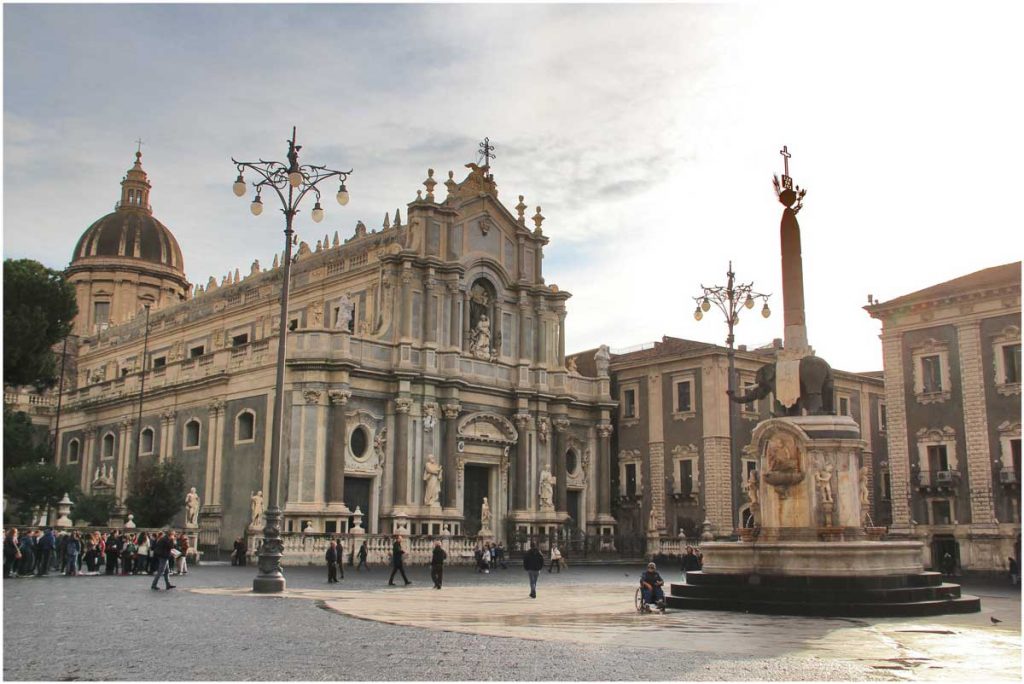
The history of the Sicilian city of Catania dates back thousands of years. The city was founded around the 13th century BC by the ancient Sicilian tribe — the Sicanians. It got its name from the Greek colony of Katane. After the Greeks, it was ruled by the Romans, then the Ostrogoths, followed by Byzantium, and later the Normans conquered Catania. Of course, the city’s changes in leadership didn’t stop there. However, it wasn’t only the diverse cultures that left their mark on the city’s appearance.
Nature also played its role. Living on a volcano is no joke! Numerous eruptions repeatedly destroyed the city. The most devastating was the eruption of Mount Etna in 1669. Lava poured over the western part of the city, wiping it off the face of the earth, reaching the sea, and extending the coastline by 700 meters. Afterward, Catania was rebuilt in the Baroque style. This style is already vibrant and lush on its own, but in Sicily, Baroque took on an especially elaborate form, turning into “Sicilian Baroque.” It’s not a separate style but rather a Sicilian “deviation.” I’m not much of a fan of Baroque, but I liked Sicilian Baroque. It’s just like all of Sicily — bright, bold, dynamic, often with distorted perspectives and broken geometry, alive.
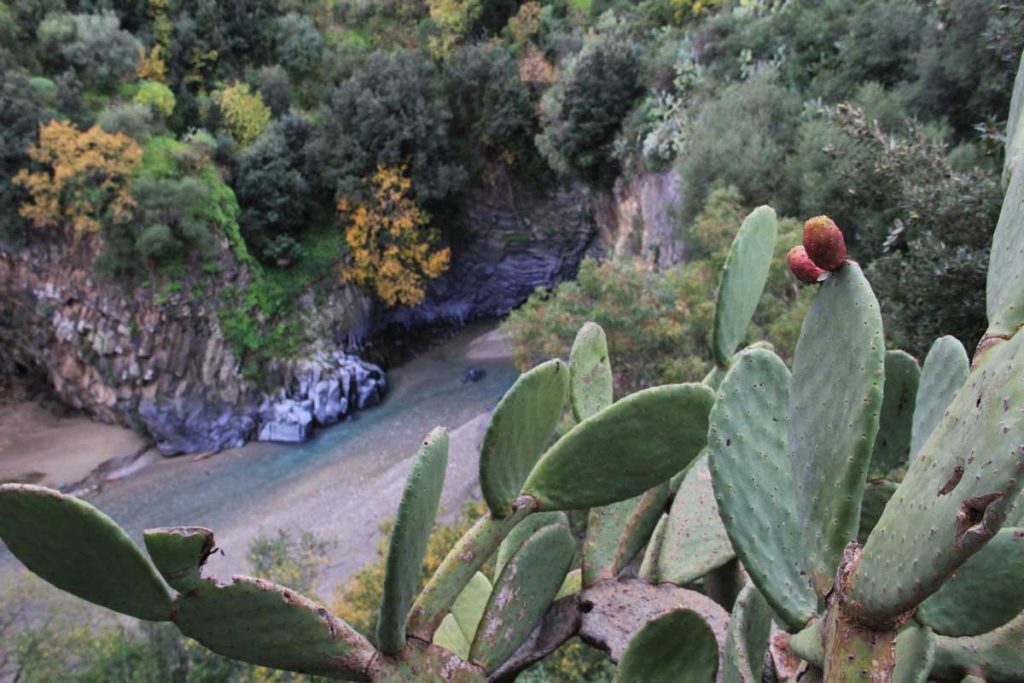
On the slopes of Mount Etna lies the Alcantara Gorge, one of Sicily’s main rivers. It was formed about 300,000 years ago as a result of volcanic activity. The walls are made of volcanic rock, and their appearance is unusual. The river below looks incredibly picturesque. In summer, judging by the photos, there’s hardly any space left on the river’s little beach. But in December, there were no people at all. And once again, you find yourself thinking that traveling to tourist spots is much better in the off-season.
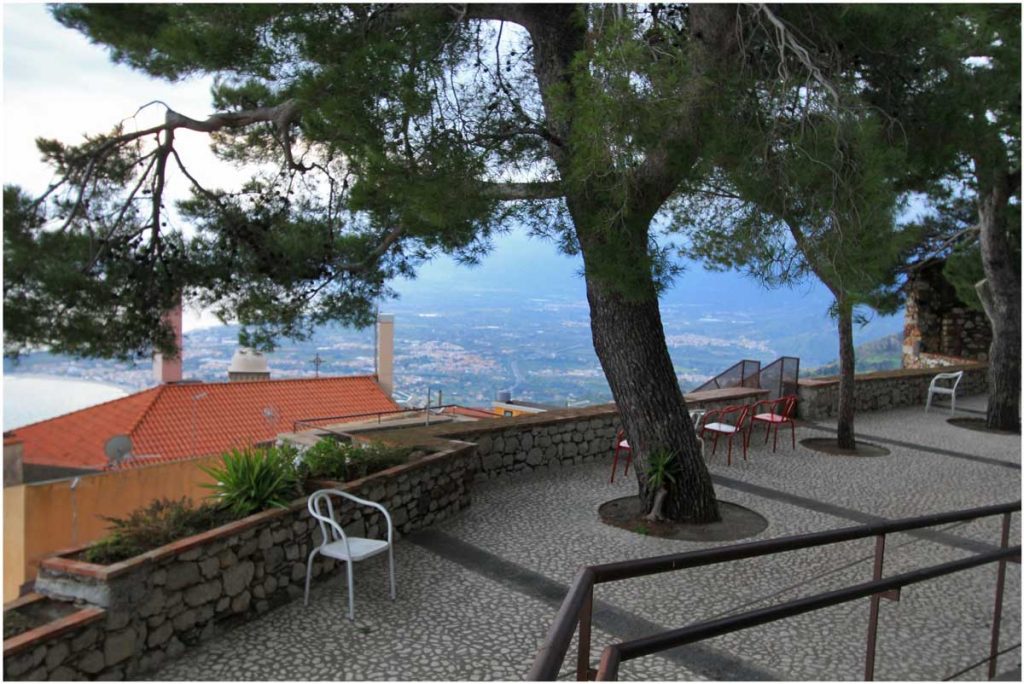
Castelmola is one of the most beautiful and oldest villages in Sicily. It stands on a mountain, and you need to drive up a narrow and steep winding road to get there… From the Piazza San Antonio, the almost toy-like main square of Castelmola, there is a wonderful view of the Ionian Sea, the Bay of Naxos, and the town of Taormina below. And, of course, the mainland of Italy, which seems just a stone’s throw away… The square itself is very charming. We walked around, looked, and couldn’t get enough of the view.
The sense of the vastness of the space below you is indescribable. Everywhere your eyes can see, there are blue-green hills with tiny houses and cozy tiled roofs. The bright sea, the dark sky, the pines, the cacti, and the illusion of being in a perfectly unreal place here and now, in this magical spot.
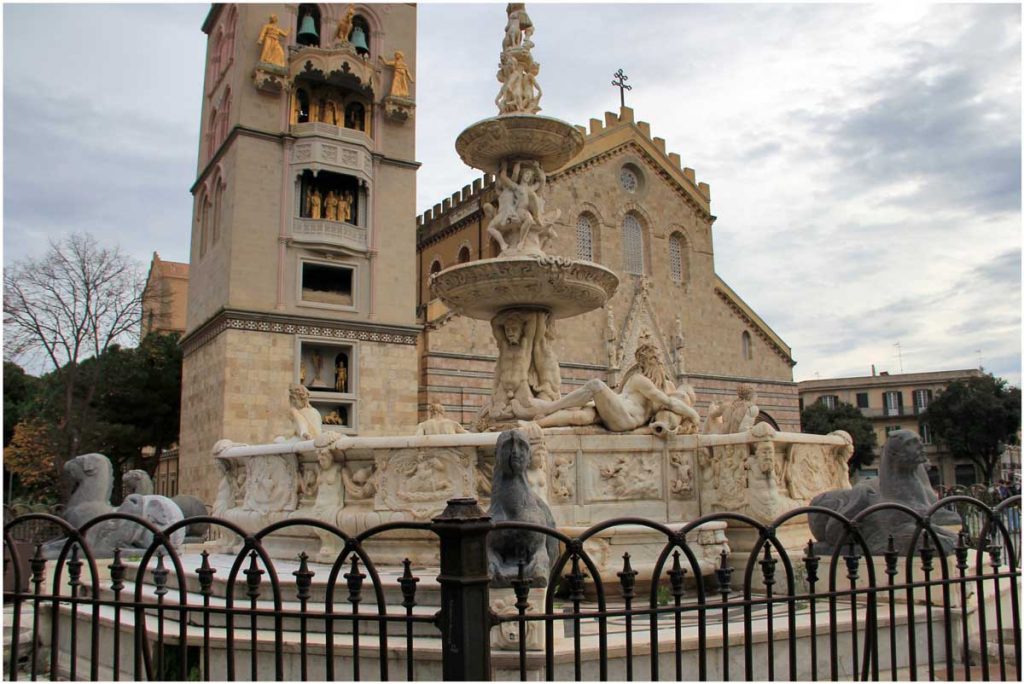
Unlike either Catania or Palermo, Messina has preserved relatively few historical landmarks. The powerful earthquake of 1908 completely destroyed the city. And during the war, it suffered quite a bit as well. So, for lovers of antiquity, Messina might seem uninteresting. But we didn’t find it boring to stroll around the city, as the lively and carefree energy of tourists arriving in Messina on cruise ships seems to leave its mark on the city. It felt light and airy, despite the rather massive earthquake-resistant architecture and overcast weather. Plus, there’s a ferry from Messina to the mainland: in half an hour, you can be in Reggio Calabria.

